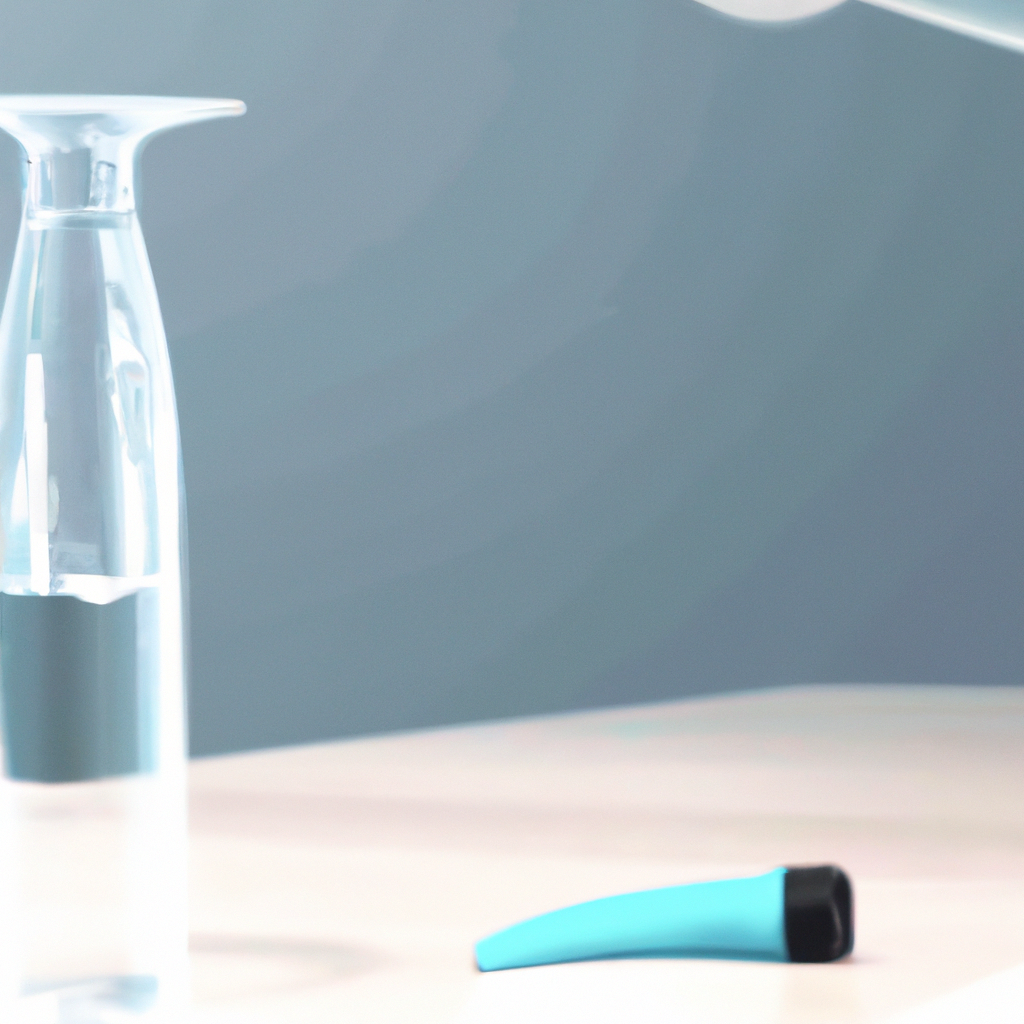Cellulite reduction techniques are based on scientific principles that aim to alter the structure of the skin and the fat cells beneath it. These techniques primarily focus on improving blood circulation, reducing excess fluid, and breaking down fat cells in the affected areas. The science behind these techniques involves understanding the anatomy of the skin, the formation and structure of cellulite, and the physiological changes that can reduce its appearance. Various methods such as laser therapy, acoustic wave therapy, and topical treatments have been developed based on these scientific principles. However, the effectiveness of these techniques varies, and research is ongoing to develop more efficient and long-lasting solutions.
Exploring the Science Behind Non-Surgical Options for Cellulite Reduction
Cellulite, the dimpled, orange-peel-like skin that often appears on the thighs, buttocks, and abdomen, is a common concern for many individuals. Despite being a completely natural and harmless condition, it can cause self-consciousness and frustration. Fortunately, advancements in science and technology have led to the development of various non-surgical cellulite reduction techniques. These methods are designed to smooth the skin’s surface and reduce the appearance of cellulite, offering a boost in confidence for those who choose to use them.
One of the most popular non-surgical options for cellulite reduction is radiofrequency (RF) therapy. This technique uses energy waves to heat the deep layers of the skin, stimulating collagen production and promoting skin tightening. The science behind this method is quite fascinating. When the skin is heated, it causes the collagen fibers to contract, resulting in immediate skin tightening. Additionally, the heat stimulates the production of new collagen and elastin, which further improves the skin’s elasticity and reduces the appearance of cellulite.
Another non-invasive technique is acoustic wave therapy (AWT). This method uses sound waves to break down the fibrous bands that cause cellulite’s dimpled appearance. The science behind AWT is based on the principle of acoustic wave propagation, reflection, refraction, and absorption in human tissue. The acoustic waves are delivered to the skin and subcutaneous fat, where they disrupt the fibrous septae, improving blood circulation and collagen production, leading to smoother, healthier-looking skin.
Laser treatments are also a popular non-surgical option for cellulite reduction. These treatments work by using light energy to break down the fibrous bands under the skin that cause cellulite. The laser energy also stimulates collagen production, which helps to tighten the skin and reduce the appearance of cellulite. The science behind laser treatments is based on the principle of selective photothermolysis, where specific wavelengths of light are used to target different components in the skin.
Cryolipolysis, also known as “fat freezing,” is another non-surgical technique that has been shown to reduce cellulite. This method uses cold temperatures to break down fat cells, which are then naturally eliminated by the body. The science behind cryolipolysis is based on the principle that fat cells are more susceptible to cold than other types of cells. When the fat cells are exposed to cold temperatures, they undergo a process called apoptosis, or programmed cell death. Over time, these dead cells are naturally eliminated by the body, resulting in a reduction in the appearance of cellulite.
Lastly, topical treatments such as creams and lotions containing ingredients like caffeine, retinol, and antioxidants have also been shown to reduce the appearance of cellulite. These ingredients work by improving blood flow, breaking down fat, and promoting collagen production. The science behind these treatments is based on the principle of transdermal delivery, where active ingredients are delivered to the skin via a topical application.
In conclusion, the science behind non-surgical cellulite reduction techniques is both fascinating and encouraging. These methods offer a safe, effective, and non-invasive way to reduce the appearance of cellulite, boosting confidence and promoting a positive body image. As science and technology continue to advance, it’s likely that even more effective treatments for cellulite will be developed in the future.
Understanding Electro-Body Therapy: A Revolutionary Technique in Cellulite Reduction
Cellulite, the bane of many women’s existence, is a common skin condition that causes a dimpled, lumpy appearance on the skin. It’s most often found on the buttocks and thighs, and can be a source of insecurity for many. However, recent advancements in technology have led to the development of new cellulite reduction techniques that are proving to be quite effective. One such technique is Electro-Body Therapy, a revolutionary method that is changing the game in the fight against cellulite.
Electro-Body Therapy, also known as EBT, is a non-invasive treatment that uses electrical stimulation to target and break down fat cells. The science behind this technique is fascinating. It’s based on the principle of iontophoresis, a process that uses electrical currents to deliver medication or other chemicals through the skin. In the case of EBT, the electrical currents are used to stimulate the fat cells, causing them to break down and be naturally eliminated by the body.
The process begins with the application of a conductive gel to the skin. This gel helps to facilitate the transmission of the electrical currents. Then, electrodes are placed on the skin in the area to be treated. These electrodes deliver a low-level electrical current that penetrates the skin and reaches the underlying fat cells. The electrical stimulation causes the fat cells to become more permeable, allowing the body’s natural waste removal processes to more easily eliminate them.
One of the key benefits of EBT is that it targets the root cause of cellulite: the accumulation of fat cells. By breaking down these cells, EBT not only reduces the appearance of cellulite but also helps to prevent its recurrence. Moreover, EBT is a painless procedure with no downtime, making it a convenient option for those with busy schedules.
In addition to its cellulite reduction benefits, EBT also promotes overall skin health. The electrical stimulation increases blood flow to the treated area, which nourishes the skin and promotes the production of collagen, a protein that gives skin its elasticity and firmness. As a result, EBT not only reduces cellulite but also leaves the skin looking smoother and firmer.
While EBT is a promising technique, it’s important to note that it’s not a magic bullet for cellulite reduction. Like any other treatment, its effectiveness varies from person to person and depends on factors such as the severity of the cellulite and the individual’s overall health and lifestyle. However, when combined with a healthy diet and regular exercise, EBT can significantly enhance cellulite reduction efforts.
In conclusion, Electro-Body Therapy is a revolutionary technique in cellulite reduction that leverages the power of electrical stimulation to break down fat cells. It’s a non-invasive, painless procedure that not only reduces the appearance of cellulite but also promotes overall skin health. While it’s not a cure-all, it’s a powerful tool in the fight against cellulite when used in conjunction with a healthy lifestyle. So, if you’re struggling with cellulite, don’t lose hope. With the right approach and the help of innovative techniques like EBT, you can achieve smoother, firmer, and cellulite-free skin.
The Role of Skin Tightening and Body Sculpting in Effective Cellulite Reduction
Cellulite, a common skin condition that affects nearly 90% of women at some point in their lives, is often a source of frustration and insecurity. Despite its prevalence, the science behind cellulite reduction techniques is not widely understood. This article aims to shed light on the role of skin tightening and body sculpting in effective cellulite reduction, providing an encouraging perspective on these innovative techniques.
Cellulite is characterized by a dimpled, ‘cottage cheese’ appearance on the skin, typically on the thighs, buttocks, and abdomen. It occurs when fat deposits push through the connective tissue beneath the skin. While it’s not harmful, many people seek to reduce its appearance for aesthetic reasons.
The science behind cellulite reduction lies in understanding the structure of the skin and the underlying fat cells. The skin is composed of three layers: the epidermis, dermis, and subcutaneous fat layer. Cellulite forms in the subcutaneous fat layer, where fat cells are compartmentalized by connective tissue. When these fat cells enlarge, they push against the skin, while the connective tissue pulls it downward, creating the characteristic dimpling effect.
Skin tightening and body sculpting techniques have emerged as effective methods for reducing the appearance of cellulite. These techniques work by targeting the root causes of cellulite, namely, the enlarged fat cells and the tension in the connective tissue.
Skin tightening procedures, such as radiofrequency (RF) treatments, use energy to heat the dermis and subcutaneous layers of the skin. This heat stimulates the production of collagen and elastin, two proteins that are essential for skin elasticity. As the skin tightens, it smooths out, reducing the appearance of cellulite. Moreover, the heat also shrinks the fat cells, further contributing to cellulite reduction.
On the other hand, body sculpting techniques, such as cryolipolysis (also known as ‘fat freezing’) and high-intensity focused ultrasound (HIFU), target the fat cells directly. Cryolipolysis uses cold temperatures to break down fat cells, which are then naturally eliminated by the body. HIFU uses ultrasound energy to destroy fat cells, which are also naturally eliminated by the body. By reducing the number of fat cells in the subcutaneous layer, these techniques help to alleviate the pressure against the skin, thereby reducing the appearance of cellulite.
It’s important to note that while these techniques can significantly reduce the appearance of cellulite, they are not a ‘magic bullet’. A healthy lifestyle, including a balanced diet and regular exercise, is crucial for maintaining the results. Moreover, these techniques may not be suitable for everyone, and it’s always recommended to consult with a healthcare professional before undergoing any cosmetic procedure.
In conclusion, the science behind cellulite reduction techniques is rooted in understanding the structure of the skin and the behavior of the underlying fat cells. Skin tightening and body sculpting techniques offer promising results by targeting these root causes. While they are not a cure-all, they provide an encouraging avenue for those seeking to reduce the appearance of cellulite. Coupled with a healthy lifestyle, these techniques can help individuals feel more confident and comfortable in their skin.In conclusion, the science behind cellulite reduction techniques primarily involves targeting the structural issues beneath the skin that cause cellulite. Techniques such as laser treatment, subcision, acoustic wave therapy, and topical treatments aim to break down the fibrous bands that pull down on the skin and create the dimpled appearance, stimulate collagen production, and improve blood flow. However, the effectiveness of these techniques varies and they may not completely eliminate cellulite. More research is needed to develop more effective and long-lasting treatments.








